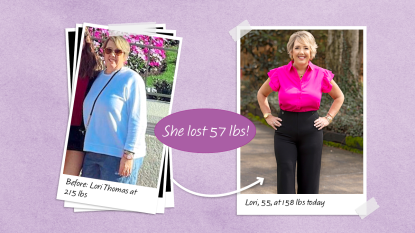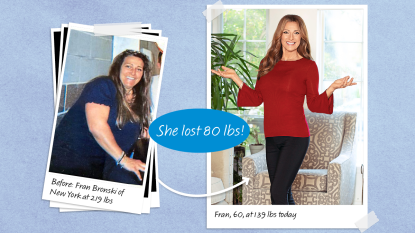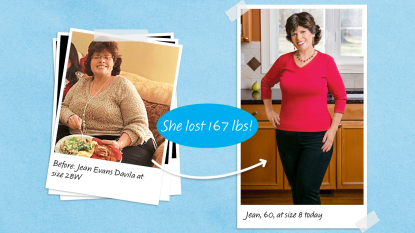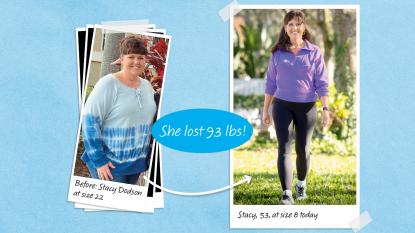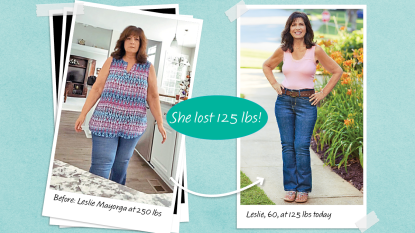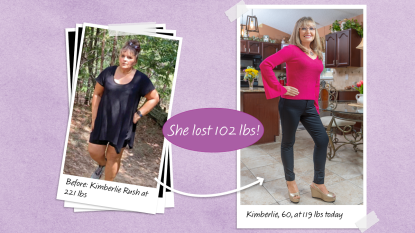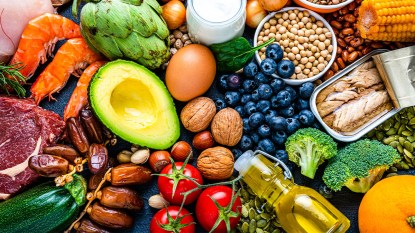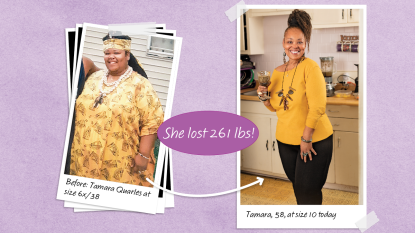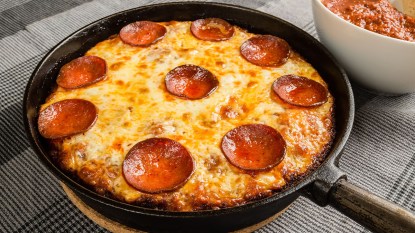Can You Really Lose Weight on the Atkins Diet Without Starving Yourself?
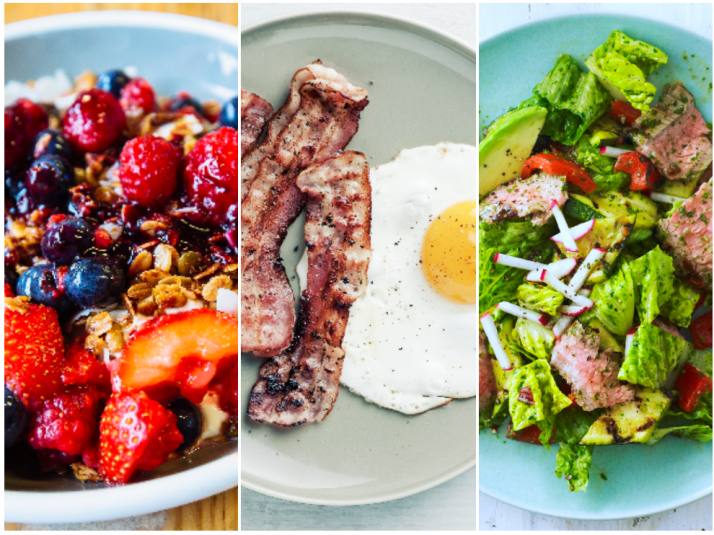
From the Weight Watchers program to the Military diet, there are hundreds of meal plans out there promising to give you a slimmer waist in no time. But how do you know which one works? After doing a little homework, we’ve found that the Atkins diet plan is one of the most popular, and for good reason. Unlike other diets, the Atkins diet plan allows you to eat real food without feeling like you’re starving yourself. Most “traditional” diets restrict calories, whereas the Atkins diet limits carbohydrates (aka sugars).In this way, the body burns fat and uses it as energy, leaving you fueled up and ready to go. The best part? You’ll lose weight without feeling hungry!
The classic Atkins approach (renamed Atkins 20) is a four-step program. You’d begin the Atkins diet Phase 1 by limiting yourself to just 20 grams of net carbs per day. Before you freak out, you should know that 20 net carbs may sound like crumbs, but they’re not. You’d be surprised at how much you can eat within even the lowest of ranges. As you progress, the carb limit increases. For example, the Atkins diet Phase 1 suggests the healthy helping of veggies, cheeses, and proteins. Phase 2 then adds beans, berries, and yogurt (among other foods) to the mix.
If you’re not ready to get too picky from the get-go, the Atkins diet plan also offers Atkins 40, in which you’ll start with 40 grams of net carbs per day. Like Phase 1 of Atkins 20, this plan also increases as you progress toward your weight-loss goal.
Now for the burning question: Does the Atkins Diet work? First of all, you should know that everyone is different, especially when it comes to body types and metabolism. That might not be the answer you were hoping to hear, but we want to make sure we’re giving you the most useful information you need to help you choose what’s best for you and your lifestyle. If you need some encouragement, a recent study published in the health journal Nutrients found that the Atkins diet’s low-carb/high-fat dietary approach is advantageous for promoting long-term weight loss in individuals who are overweight.
Atkins Diet Menu
If you think you’re in this alone, you’re not! Plenty of people choose Atkins diet meal plans over other weight-loss meal plans. In fact, the Atkins diet mobile app has a “group” option where you can chat with others about which Atkins plan you’re on, whether you chose Atkins 20 or Atkins 40. In addition to discussion boards and a personal weight tracker, the Atkins app doubles as an Atkins diet meal planner, complete with Atkins diet recipes, Atkins diet snacks, and even Atkins diet desserts.
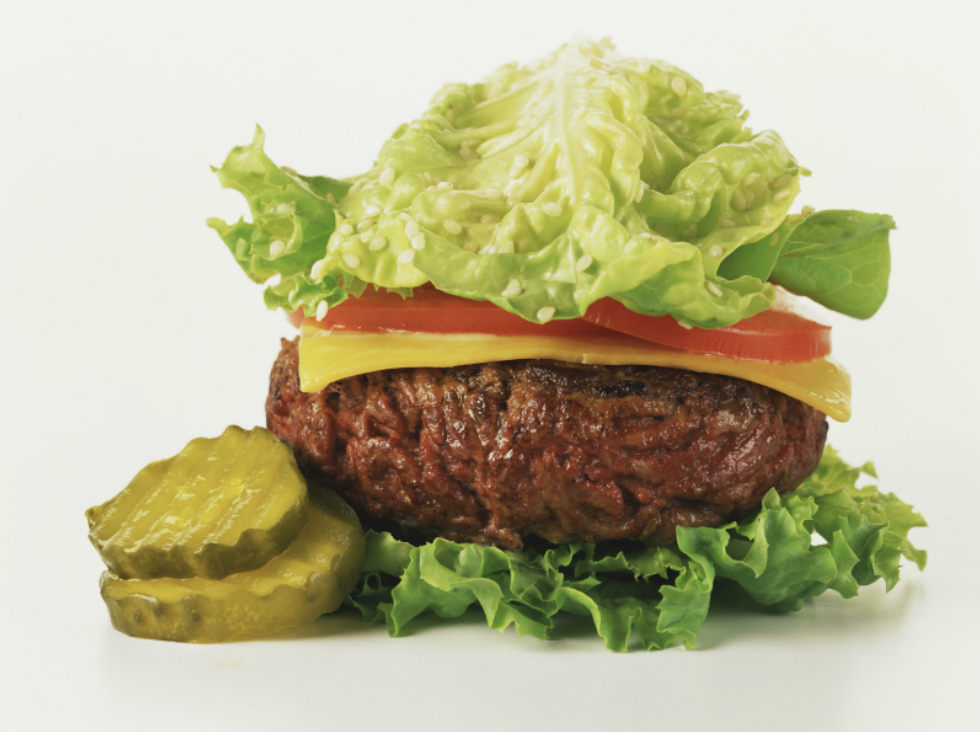
(Photo Credit: Getty Images)
What does a typical Atkins meal look like? Well, it ultimately depends on which Atkins diet plan you chose. If you go for the Atkins 20 plan, for example, a normal day during the Phase 1 stage would include a variety of “foundation vegetables” (green, leafy veggies like kale and broccoli, plus cabbage and and cauliflower), a healthy helping of protein (fish, poultry, meats, and eggs), cheese (yay!), and a substantial amount of nuts and seeds. This means an Atkins diet breakfast, lunch, and dinner might include a spinach-and-cheese omelet for breakfast, a kale or spinach salad with cucumbers, raw broccoli, and cheese for lunch, and a blackened salmon filet with a side of cauliflower or brussel sprouts for dinner. Doesn’t sound too bad, right?
Atkins Diet List of Foods
If you’re having trouble finding out what to make for dinner, there are plenty of Atkins diet recipes online and in print that include acceptable Atkins diet snacks and Atkins diet desserts. Don’t have the time to find Atkins diet meal plans yourself? Just download the app for quick access to hundreds of daily meal options. Although there are several Atkins diet recipes on the actual Atkins site, here is a comprehensive list of all of the foods you can eat on the Atkins 20 Atkins diet plan.
Atkins Diet Phase 1
The Atkins diet Phase 1 (also known as the “induction” phase) list of acceptable foods includes:
- All fish, including: flounder, sole, herring, salmon, sardines, tuna, trout, cod, halibut.
- All fowl, including: Cornish hen, chicken, duck, goose, pheasant, quail, turkey, and ostrich.
- All shellfish, including: clams, crabmeat, mussels, oysters, shrimp, squid, and lobster. (Please note that oysters and mussels are higher in carbs, so if you’re craving either, you should limit yourself to four ounces per day.)
- All meat, including: bacon, beef, ham, lamb, pork, veal, and venison. (Please note that some processed meats, like bacon and ham, are cured with sugar. Check the package before indulging!)
- Any egg prepared in any style, including: deviled, fried, hard boiled, omelets, poached, scrambled, and soft-boiled.
- Fats (the good kind) and oils, including: butter, mayonnaise (with no added sugar), olive oil, vegetable oils, canola oil, walnut oil, soybean oil, sesame oil, grape seed oil, sunflower oil, safflower oil.
- Artificial sweeteners, including: sucralose, saccharin, and stevia.
- Beverages including: clear broth, bouillon (make sure there’s no sugar added), club soda, cream (heavy or light), decaffeinated or regular coffee and tea, diet soda (take note of the carb count, which should be zero), flavored seltzer (no-calorie seltzer only), herb tea (without added barley or fruit sugar), unflavored soy/almond milk, and water (eight ounces per day). Water options include filtered water, mineral water, spring water, and tap water.
- Cheese, including: Parmesan (grated), goat, cheddar, gouda, mozzarella (whole milk), cream cheese (whipped), Swiss, and feta. (Cheese is an amazing thing, but it does contain carbs, so you should stick to three to four ounces of cheese per day.)
- Foundation vegetables, including: alfalfa sprouts, chicory greens, endives, escaroles, olives (green and black), watercress, arugula, radishes, spinach, bok choy, lettuce, turnip greens, hearts of palm, radicchio, artichoke, celery, collard greens, pickles, broccoli rabe, sauerkraut, avocados, daikon radish, red and white onions, zucchini, cucumbers, cauliflower, beet greens, broccoli, fennel, okra, rhubarb, swiss chard, asparagus, broccolini, bell peppers, sprouts, eggplants, kale, scallions, turnips, tomatoes, jicama, portobello mushrooms, yellow squash, cabbage, green beans, leeks, shallots, brussel sprouts, cherry tomatoes, spaghetti squash, kohlrabi, pumpkin, snow peas, and garlic. (During Phase 1, you should be eating roughly 12 to 15 grams of net carbs per day in the form of vegetables. This high-fat, high-protein, and low-carb introduction will give you a solid kick start.)
- Salad garnishes, including: crumbled bacon, hard-boiled egg, sauteed mushrooms, sour cream, and grated cheeses.
- Herbs and spices, including: basil, cayenne pepper, cilantro, dill, oregano, tarragon, parsley, chives, ginger, rosemary, sage, black pepper, and garlic.
- Salad dressings, including: red wine vinegar, caesar, ranch, lemon juice, blue cheese, lime juice, balsamic vinegar, Italian, and creamy Italian.
Atkins Diet Phase 2
Below is the Atkins diet Phase 2 (also known as the “Balancing” phase) list of acceptable foods (this list, plus the items listed above). You’ll be allowed to add higher carbs into your diet during Phase 2 (think nuts and fruits).
- Dairy, including: mozzarella cheese, yogurt (Greek and plain), unsweetened milk, whole milk, ricotta cheese, cottage cheese, and heavy cream.
- Nuts and seeds, including: Brazil nuts, macadamias, hulled sunflower seeds, walnuts, almonds, pistachios, peanuts, pecans, and cashews.
- Fruits, including: blackberries, raspberries, cranberries, strawberries, cantaloupe, honeydew, gooseberries, boysenberries, and blueberries.
- Juices, including: lemon juice, lime juice, and tomato juice.
- Beans, including: lentils, kidney beans, lima beans, pinto beans, black beans, navy beans, great northern beans, and chickpeas.
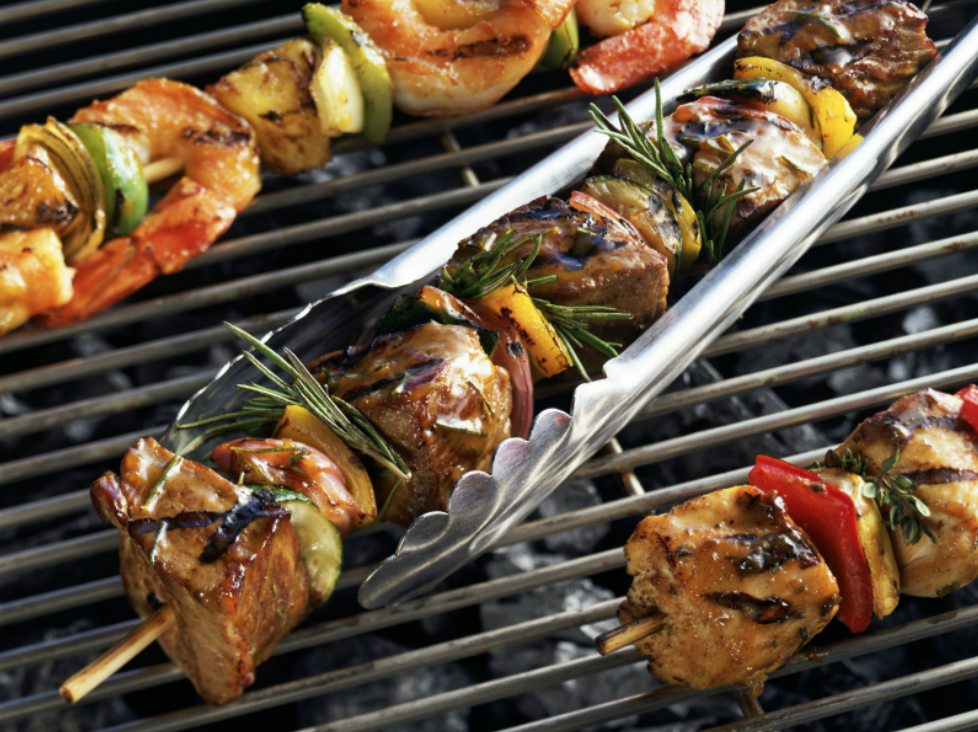
(Photo Credit: Getty Images)
Atkins Diet Phase 3
Below is the Atkins diet Phase 3 (also referred to as the “Fine-Tuning” phase) list of acceptable foods (this list, plus the items listed above):
- Starchy vegetables, including: carrots, rutabaga, beets, acorn squash, sweet potatoes, parsnips, potatoes, and corn.
- Fruit, including: coconut, figs, cherries, watermelon, pomegranate, papayas, plums, guava, apples, clementines, grapefruit, kiwis, apricots, pineapple, peaches, mangoes, grapes, oranges, dates, bananas, and pears.
- Grains, including: wheat bran, wheat germ, oat bran, quinoa, whole-wheat bread, oatmeal, polenta, grits, whole-wheat pasta, barley, millet, and rice.
Once you’ve reached Phase 4, you’ve learned which foods boost the metabolism and which foods you should avoid. All of the “acceptable” foods in the fourth phase of the Atkins diet overlap with the foods listed in Phase 3, so you shouldn’t have any problem transitioning.
Atkins Diet Phase 4
Below is the Atkins diet Phase 4 (also known as the “Maintenance” phase) list of acceptable foods (this list, plus the items listed above):
- Starchy vegetables including: carrots, rutabaga, beets, peas, acorn squash, butternut squash, sweet potatoes, parsnips, potatoes, and corn.
- Fruit, including: coconuts, figs, cherries, watermelon, pomegranate seeds, papayas, plums, raisins, guava, clementines, apples, kiwis, grapefruit, apricots, pineapples, peaches, mangoes, grapes, oranges, dates, bananas, and pears.
- Grains, including: wheat bran, wheat germ, oat bran, quinoa, whole-wheat bread, oatmeal, polenta, grits, whole-wheat pasta, barley, millet, and rice.
While these are listed on the Atkins website as acceptable foods, you should note that there is a portion-control component to the Atkins diet plan. To find out the recommended portion sizes, please visit Atkins.com. If you’re not ready to go all-in by yourself, the Atkins website lists three different Atkins diet meal plans, including the Quick-Start Meal Plan, the Standard Meal Plan, and the Foodie Meal Plan, along with a variety of meals you can have each day of the week.
Is the Atkins Diet healthy?
Before deciding to dive head first into a new diet, it’s important to check out its pros and cons to make sure it’s the best option for you. Like most things, the Atkins diet plan has a variety of pros and cons. We’ll go through each here so you can make an informed decision on whether or not the Atkins diet plan is right for you.
Though some might find the Atkins diet plan restrictive, it’s actually full of hearty options such as steak and seafood, in addition to healthy carbohydrates like leafy greens. Because dieters on the Atkins diet are “allowed” to indulge on meat and veggies, they’re less likely to feel those afternoon hunger pangs. In addition, knowing what’s “allowed” and what’s “not allowed” teaches dieters the difference between healthy carbs and not-so-healthy carbs, giving them the knowledge they need to figure out what works for weight loss and what doesn’t. Of course, this brings us to the biggest pro the Atkins diet plan has to offer: significant weight loss!
However, some individuals may experience Atkins diet side effects, including decreased energy levels, dehydration, halitosis (aka bad breath), and binge eating — all of which are associated with cutting carbs.
Carbs fuel our bodies and give us the energy we need to go about our day. So if your body is used to getting 200 to 300 carbs per day and then you decide to go cold turkey, you may feel weak and tired. Unfortunately, this fatigue stretches far beyond your muscles. Following a low-carb diet can also negatively impact your thyroid function in addition to causing adrenal fatigue.
With all of these side effects, many potential dieters have probably wondered: How safe is the Atkins diet?
“When you’re overweight, shedding pounds can improve your health, and we know the Atkins diet works. But it’s still unclear how the higher amounts of animal protein and fat in the Atkins diet affect long-term health,” Arefa Cassoobhoy, MD, told WebMD. “Recent research suggests that people on the Atkins diet who chose foods rich in plant fat and protein did better with their health than those who went with the diet rich in animal fat and protein.”
So, does the Atkins diet work? It can, but it’s not for everyone, so it’s important to speak with a registered dietitian on your local health care provider about what’s best for you. If you really want to give the Atkins diet plan a chance, the Atkins website is full of resources and recipes to help you craft customized meal plans that can fit your lifestyle, making your weight-loss goals even easier to reach.
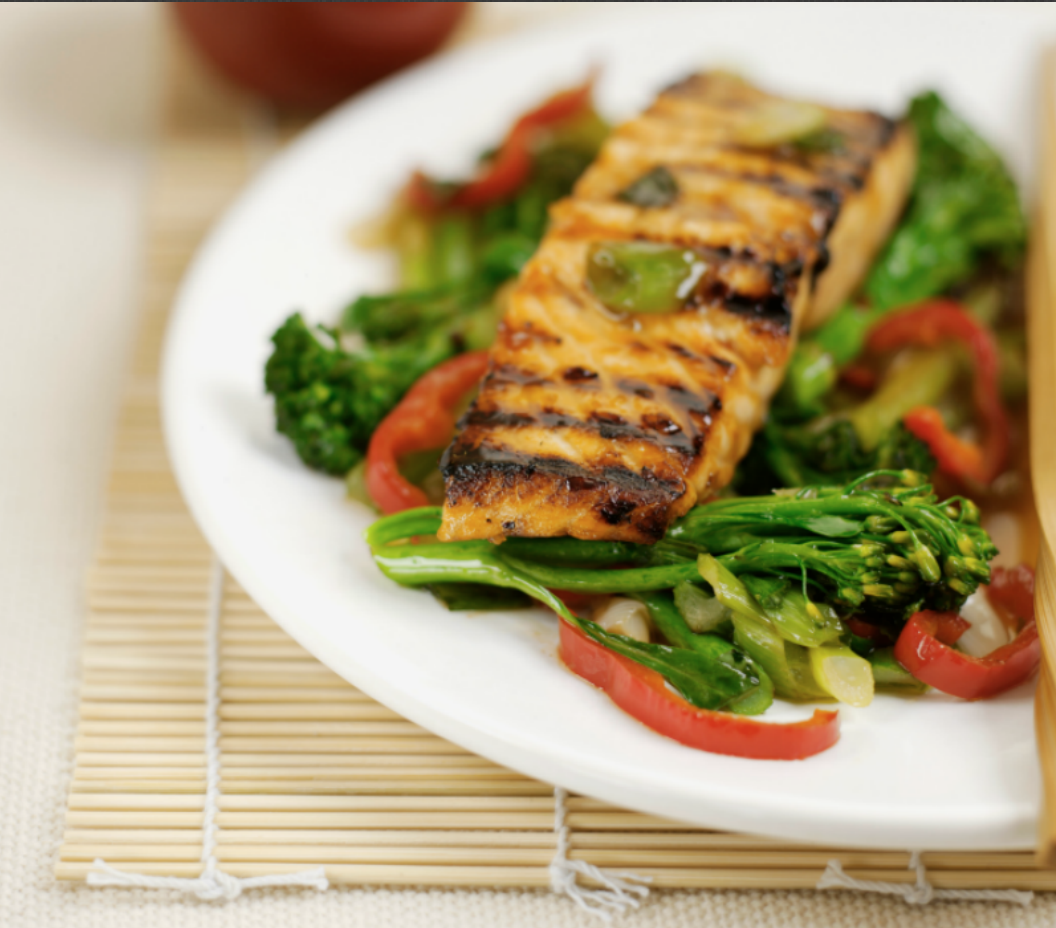
(Photo Credit: Getty Images)
Can the Atkins diet lower blood pressure?
The point of the Atkins diet is to lose weight while slowly incorporating healthy eating habits into your already very busy schedule. In the past, the Atkins diet has been proven to result in healthy cholesterol levels and healthy blood-pressure levels as well.
After analyzing four groups of dieters (a total of 249 participants), researchers at Stanford University found that the decrease in mean (average) blood pressure levels was largest in the Atkins group when compared to the other groups, which included a Zone diet group, a LEARN diet group, and an Ornish diet group.
Is the Atkins diet gluten-free?
Fortunately, gluten-free dieters can participate in the Atkins diet plan. Gluten is an ingredient found in wheat, rye, and barley, all of which are high in carbs. Though these items show up in the later phases of the Atkins diet plan, they are by no means required. The Atkins website lists a variety of gluten-free meals, including bacon, avocado, and Jack cheese omelets with fresh salsa; baked tamari-lemon pork chops; and baked salmon with bok choy and red bell pepper puree.
Is the Atkins diet safe for diabetics?
Diabetes is a major concern for people who are obese or are facing heart disease. Whenever a person’s blood sugar gets too high, the body produces insulin. The insulin then transports those extra blood sugar cells to a place where they can be burned for energy. People who have diabetes, however, have trouble producing insulin, which leads to higher blood glucose levels.
With that being said, a low-carb diet may work for someone with either type 1 or type 2 diabetes. In fact, a five-year study conducted by researchers at the University of Colorado Denver School of Medicine found that both low-carb and low-glycemic diets improved hemoglobin A1c levels.
“A low-carbohydrate diet combines two approaches that, on their own, improve blood glucose control: weight loss and a reduced glycemic index diet,” the researchers wrote . “Because low-glycemic diets typically contain from 40 to 60 percent of calories from carbohydrate, it’s possible that the beneficial effect of low-glycemic diets could be augmented even further by the reduction of the absolute amount of carbs, or by a reduction in calories,” added Eric Westman, MD.
Even so, the Atkins diet isn’t for everyone, and those with diabetes should be cautious.
“It is certainly riskier for overweight individuals with medical problems such as heart disease, hypertension, kidney disease, and diabetes than it is for overweight people with no health problems,” wrote Ellen Coleman, RD.
Atkins Diet vs. Ketogenic Diet
As you’ve probably gathered by now, the Atkins diet is a low-carb, high-protein diet. Like the ketogenic diet, the Atkins diet limits your carb intake, ultimately forcing your body to burn fat for energy in a process known as ketosis. The ketogenic diet (also known as the keto diet) was initially used to treat epilepsy. It is based on a fixed amount of carb consumption and a high fat intake. Similar to the Atkins diet plan, the keto diet has also been proven to help the body burn fat and regulate blood sugar levels.
Though these two diets sound very similar, the differences between the keto diet and the Atkins diet are quite vast. Unlike the keto diet, the Atkins diet plan consists of four phases, starting with a carb-strict phase that gradually progresses. The Atkins diet also focuses on net carbs (the grams of total carbohydrates in a portion of food minus the fiber), rather than total carbs consumed. Essentially, the Atkins diet allows you to choose from a variety of foods, whereas the keto diet is more restrictive.
Best Atkins Diet Books
If you’d rather flip through the pages of an Atkins diet cookbook than look at a screen, we don’t blame you. There are tons of quality low-carb cookbooks out there — and here are three to get you started.
Atkins for Life Low-Carb Cookbook: More than 250 Recipes for Every Occasion
Looking for some solid advice? Why not ask the Atkins pros? This hardcover book is not only cheap, but also jam-packed with low-carb recipes for any occasion. Whether you’re hosting a dinner party, trying to throw together a quick (but filling) breakfast, or meal-prepping for tomorrow’s desk lunch, Atkins for Life Low-Carb Cookbook: More Than 250 Recipes for Every Occasion ($19.39, Amazon) is definitely worth checking out. Think of the potential combinations 250 recipes could create! Now that’s what we’d like to call a far-from-boring diet.
Atkins: Eat Right, Not Less: Your Guidebook for Living a Low-Carb and Low-Sugar Lifestyle
This thorough guide ($19.99, Amazon) is a top-selling cookbook worth your time. More than 18 five-star reviews claim this cookbook is where it’s at when it comes to diving into dieting head first, especially if you’re unsure of where to begin.
“I liked how the book started out talking about the sugar in our diet, and even included a list of the sneaky names for sugar that may slip by us because we don’t always know which ones are basically, well, sugar,” wrote Amazon reviewer Conni.
Low Carb Diet Cookbook: 4 Weeks for Rapid Weight Loss and Overall Health With Essential Guide of Low Carb Diet and Top 40 Easy & Delicious Recipes
The title of this Atkins Diet cookbook is quite the mouthful, but it’s received 59 five-star reviews — not to mention it’s only $6. Low Carb Diet Cookbook: 4 Weeks for Rapid Weight Loss and Overall Health With Essential Guide of Low Carb Diet and Top 40 Easy & Delicious Recipes ($5.38, Amazon) offers readers 120 pages of informative yet easy to understand Atkins diet facts, low-carb science, and Atkins-friendly recipes.
“This book is loaded with a lot of tasty recipes, tips and guides that I need to know about how to lose weight fast and successfully,” wrote Amazon reviewer Vanessa Coleman. “Jimmy Amanda is a great author on this topic. That’s why I can understand the whole book very easily. From this book you will learn about the science behind the low-carb diet, the origins of the low-carb diet, foods to eat and foods to be avoided, and much more.”
Who created the Atkins Diet?
Dr. Robert C. Atkins published the book that started it all, Dr. Atkins’ Diet Revolution ($6.39, Amazon), in 1972. Soon after, dieters everywhere clung to Dr. Atkins’ advice, making the Atkins diet one of the most popular waistline-slimming meal plans in the United States.
Dr. Atkins’ book quickly became a bestseller, setting itself apart from other “fad diet” books. So far, the guide has been reprinted 28 times and has sold more than 10 million copies worldwide. Dr. Atkins went on to pen a number of other books, including Dr. Atkins’ Quick and Easy New Diet Cookbook ($9.83, Amazon) and The Vita-Nutrient Solution: Nature’s Answer to Drugs ($22.48, Amazon).
Dr. Atkins was a practicing doctor said to have seen more than 60,000 patients throughout his career. He appeared on talk shows as a diet and health expert, and even had a radio program called Your Health Choices. Sadly, Dr. Atkins passed away in New York City in 2003.
We write about products we think our readers will like. If you buy them, we get a small share of the revenue from the supplier.
More from Woman’s World
Lose 13 Pounds With a Carb-Friendly Diet That Works Like Gastric Bypass
Caring for a Sick Pet Can Have a Major Effect on Your Mental Health, Study Suggests


